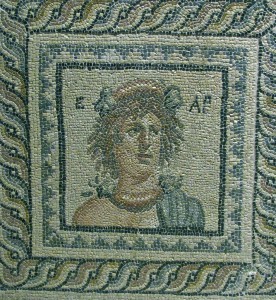
Why do pictures made up of hundreds of separate pieces appear to us humans as whole and cohesive? It turns out that our brains are wired to perceive objects in their entirety before identifying individual parts. This is a phenomenon known as Gestalt.
Perhaps the first artists to make use of Gestalt were those who worked with mosaics, colored bits of stone fixed into mortar. The concept is improbable because stones are among the most mundane of materials. Yet artists have used them successfully as far back as 400 BCE.
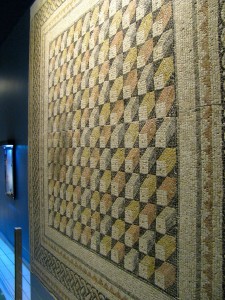
Affluent Greeks, and later Romans, laid mosaics on the floors of their dwellings just as we place decorative rugs. Some were simply decorative designs, but others served a storytelling function, depicting scenes from the lives of important gods and goddesses.
Byzantines had a different goal for mosaics. They used them to adorn the walls and ceilings of churches–and to remind congregants of their faithful forbears. In addition to stones, Byzantine mosaic artists incorporated pieces of glass with reflective silver and gold leaf backing.
As Turkey was the home to both Byzantine and Roman cultures, this country is a treasure trove of mosaic art.In 1999, Turkey was preparing to construct a large dam across the Euphrates River in southeastern Turkey. As engineers began their work, however, they uncovered ruins of a 2nd century CE Roman city.
The city was called Zeugma. Located at the eastern edge of the Roman Empire, it had an estimated 70,000 residents and served as the base for a Roman legion.
Its position on the banks of the Euphrates River and along the Silk Road made it immensely wealthy, and this wealth was displayed in home furnishings. Frescoes uncovered from the villas appear almost as fresh as when they were painted nearly 2,000 years ago. Beautiful mosaics depict a vanished culture’s mythology. Many graceful stone columns stand in place, and around them are remains of walls and plumbing, iron window frames and lamps that illuminated nights long ago.
To save Zeugma’s mosaics from submersion, many were removed to a museum in the nearby city of Gaziantep.Several weeks ago, Sankar and I drove from Gaziantep east to the Euphrates River where we found Zeugma and the remains of a large terraced dwelling above the dam’s waters. A museum is being built around this dwelling, but it is not yet complete, so we were allowed to wander around freely and at no cost.
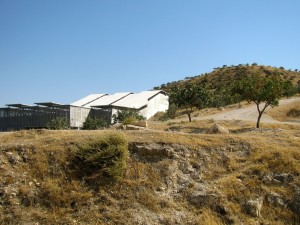 |
| Preserved Zeugma dwelling, soon to open as a museum |
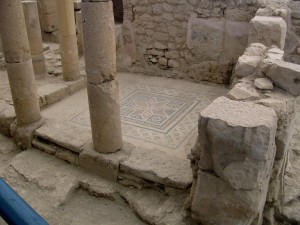 |
| Ancient splendor: mosaic floor uncovered by archeologists |
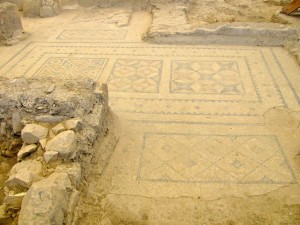 |
| Three-paneled mosaic “carpet” and other, separate sections |
The next morning, we visited Gaziantep’s brand new Zeugma Museum, said to be the largest collection of mosaics in the world. Many tell the stories of Roman gods and goddesses.
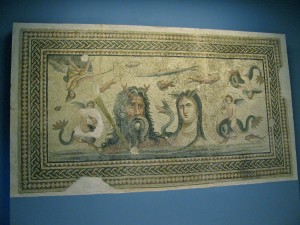 |
| Oceanos and Tethys among underwater friends |
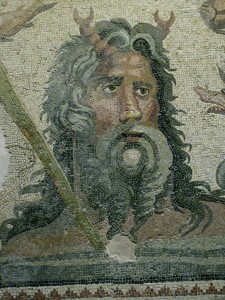 |
| Oceanos, a laid-back beach bum |
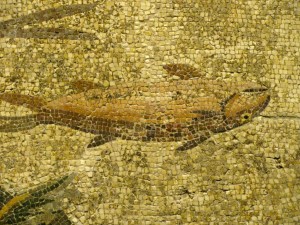 |
| This fish swims upside down in the Oceanos mosaic |
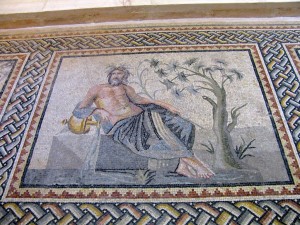 |
| The relaxed god of the Euphrates, with river water flowing out of his jug |
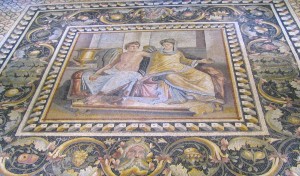 |
| Eros (Cupid) and Psyche in love |
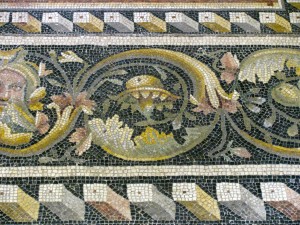 |
| Border detail, Eros and Psyche mosaic |
 |
| Parthenope and Metiochus, legendary lovers who could never be united. Ironically, parts of this mosaic were separated for years and finally brought back together. |
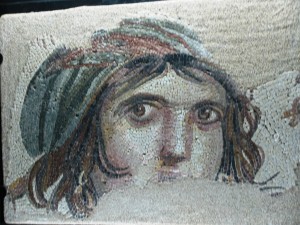 |
| This famous mosaic is known as the Gypsy Girl. It could be the goddess Gaia. Or it could even be a young Alexander the Great. What is (s)he thinking? |
Here is an interesting video that explains the Zeugma mosaics:
http://video.google.com/videoplay?docid=8323657299167199011#
Now let’s look at Byzantine mosaics. Since Istanbul was for over a thousand years the center of Byzantine Christianity, many of its churches feature exquisite religious mosaics, created to inspire religious fervor and devotion.The Pammachristos church, built in the 11th and 12th centuries, has some of the finest mosaics in Istanbul.
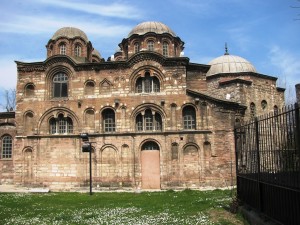 |
| Pammachristos |
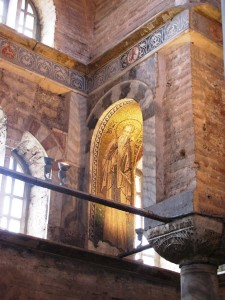 |
| St. Anthony, brightening an otherwise dark ceiling arch |
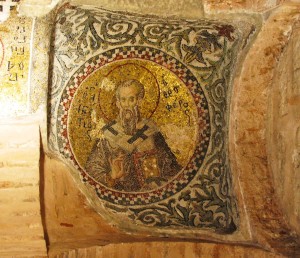 |
| St. Gregory the Illuminator, looking down from a richly-decorated ceiling dome |
St. Savior in Chora is considered the finest surviving example of a Byzantine church.The current building dates from about 1077, but the mosaics that cover the interior walls were placed between 1315 and 1320. The walls and ceiling mosaics detail the geneaology of both Mary and Jesus, and portray important scenes from their lives.
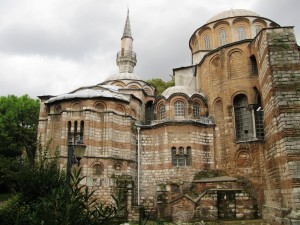 |
| St. Savior of Chora |
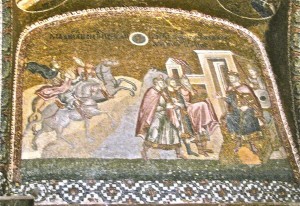 |
| The Journey of the Magi |
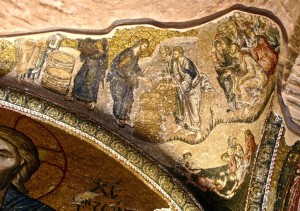 |
| Blessing the loaves |
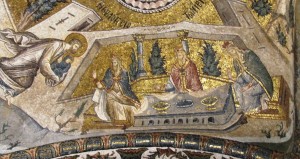 |
| The blessing of the baby Mary |
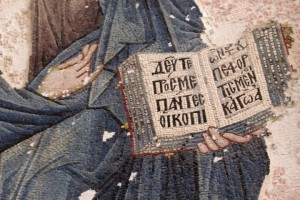 |
| Jesus holding the Bible, “Come to me, all you who are weary and burdened, and I will give you rest.” (Matthew 11:28) |
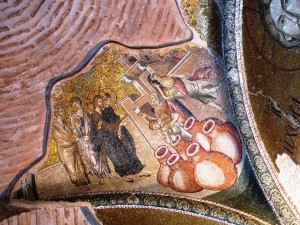 |
| Changing water into wine. Wine pot mosaics are actual ceramic fragments |
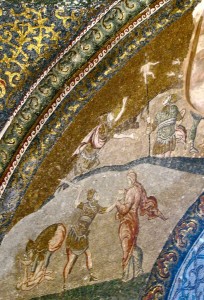 |
| Herod’s massacre of the innocents |
Finally, we have Istanbul’s famous Hagia Sofia, dedicated in 537 CE. The largest church in Christendom for over a thousand years, its walls feature stunning mosaics.
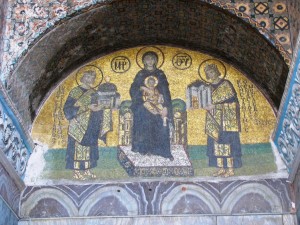 |
| A formal depiction of Mary, Jesus and Emperors Justinian and Constantine |
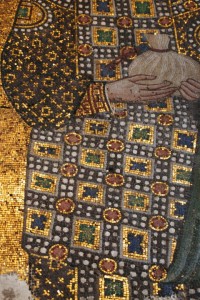 |
| Detail of Emperor Constantine’s robe in another panel |
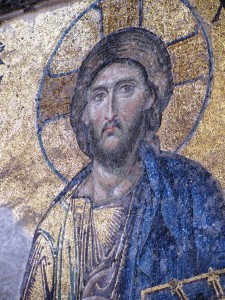 |
| Visitors turn a corner in the upper gallery and see this stunning Jesus mosaic. |
Although our eyes integrate mosaic pieces into something whole, the artist must go further. His/her greatest challenge is to express and convey emotion. How does the mosaic artist do this? To capture and convey nuanced expression, the artist selects the finest, smallest stones, and uses the most subtle gradations of color.
Small stones, the gravel under our feet. They are the details, the emotions of the mosaic world.























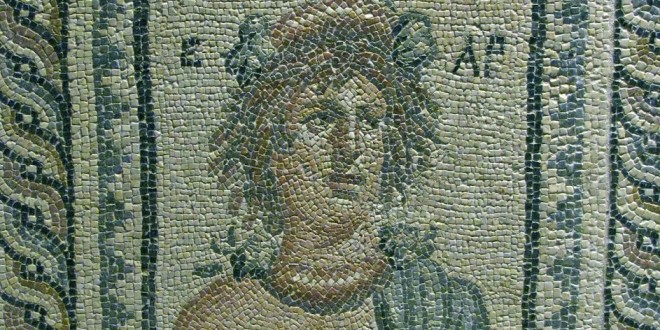



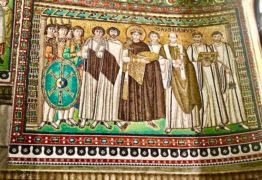
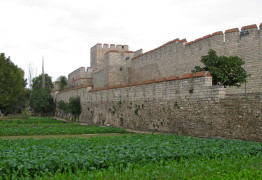

That’s phenomenal mom! Loved the intro. Those really are intricate, but how did beach bum deserve his own mosaic?
Totally fascinating!
Wonder commentary and photos. The Zeugma mosaics are breathtaking.Lots of opportunity for metaphor in mosaics: pieces of rock, seeing the whole, sums being greater than parts. I especially remember the folds in fabric.
I’m curious to find out what blog system you’re utilizing? I’m experiencing some minor security problems with my latest website and I’d like to find something more safe. Do you have any solutions?
The fact is that the Cloud host requires only basic computer knowledge.
As this is the complete opposite of shared hosting, this means that there is more to this web hosting like more disk space, speedy data transfer and availability of
more software. If you have technical skills and if you are looking for something inexpensive, Linux based servers can be
a good choice.